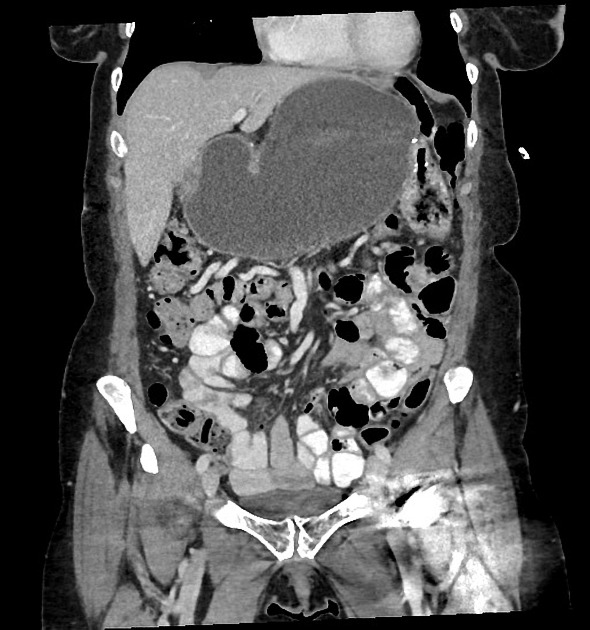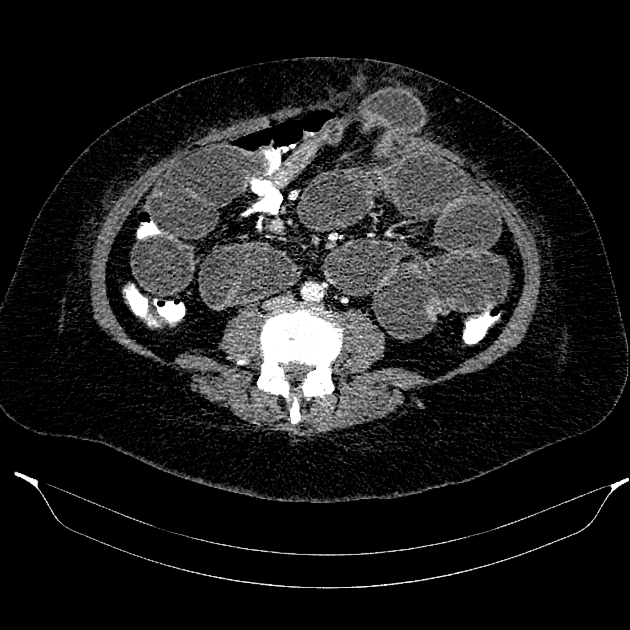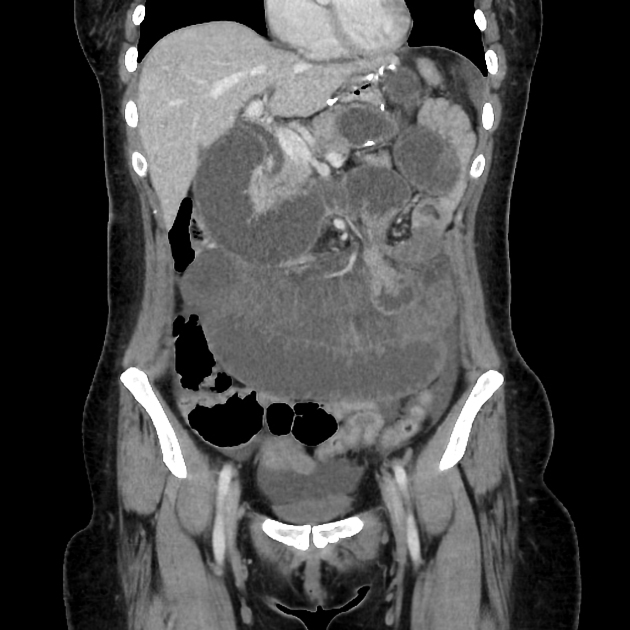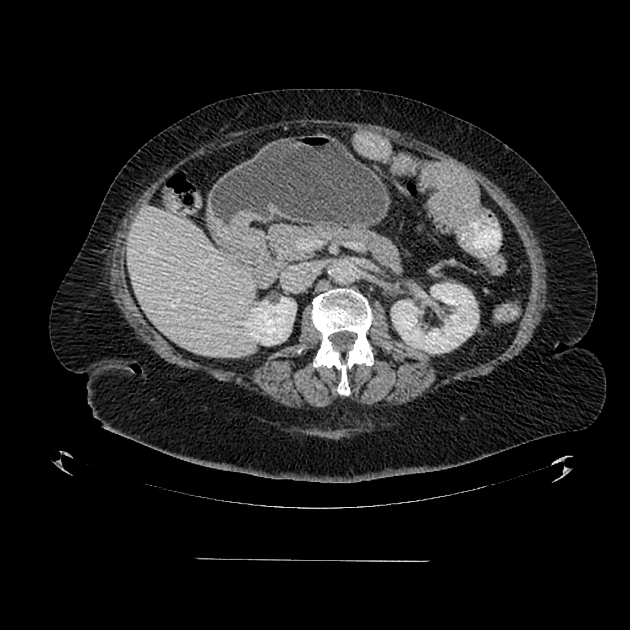Afferent loop syndrome is an intermittent partial or complete mechanical obstruction of the afferent limb of a gastrojejunostomy.
The syndrome classically refers to obstruction of the upstream limb of a side-to-side gastrojejunostomy but has also been used to refer to the biliopancreatic limb of a Roux-en-Y gastrojejunostomy. It can be seen after:
- partial gastrectomy
- gastric bypass
- pancreaticoduodenectomy
On this page:
Epidemiology
Afferent loop syndrome is not an uncommon postoperative complication, and one study has estimated that it occurs in 13% of post-pancreaticoduodenectomy patients 2. Afferent limb syndromes have decreased in incidence with newer surgical techniques to decrease the size of the limb.
Clinical presentation
Patients usually present with epigastric pain, abdominal distention, nausea, and potentially bilious vomiting. It has been classified as acute (<7 days postoperative) or chronic (>7 days postoperative). Bilious vomiting is presumed to occur from regurgitation of bilious contents in the afferent limb into the stomach after release from intermittent obstruction.
Pathology
Possible causes of afferent loop syndrome include kinking at the anastomosis, radiation stricture, internal hernia, or recurrent tumour at the anastomosis.
Radiographic features
Abdominal radiograph
- dilated bowel in the right upper quadrant
- no dilated bowel may be present, and a high clinical suspicion should be maintained in the appropriate setting
Fluoroscopy
- non-opacification of the afferent loop on an upper GI study
- possible delayed filling of an enlarged afferent loop
CT
- "U-shaped" loop of bowel, adjacent to the pancreas, usually containing water attenuation fluid
- common bile duct should enter into the loop
- possible gallbladder and biliary dilatation
Treatment and prognosis
Both transhepatic and transgastric approaches to relieve the obstruction have been used. An open procedure is also possible but second line.
Practical points
- there is some differing use of the term "afferent limb" in the literature and depending on the type of surgery
- in some sources, "afferent limb" is used to refer to stump of small bowel upstream from the Roux limb; some sources use it to refer to the biliopancreatic limb; always check the context to understand the function of the "afferent limb"








 Unable to process the form. Check for errors and try again.
Unable to process the form. Check for errors and try again.